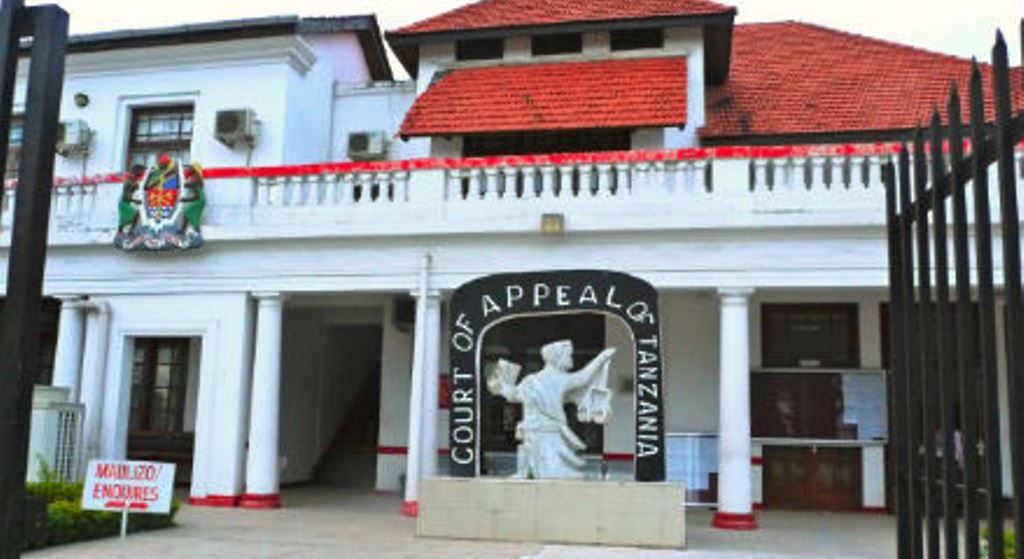AfricaPress-Tanzania: THE Court of Appeal has ordered the immediate release from prison of a Guinea Bissau national, Alberto Mendes, who was sentenced to 22 years’ imprisonment and pay over 144m/-fine for trafficking in 85 pellets of heroin hydrochloride, which are narcotic drugs.
Justices Richard Mziray, Lugano Mwandambo and Rehema Kerefu ruled in favour of Mendes, the appellant, after allowing his appeal he had lodged to challenge the judgment given by the High Court of Tanzania.
They took into consideration some doubts in the prosecution’s case, which the justices resolved them in favour of the appellant with the effect that the case against him was not proved beyond a reasonable doubt.
“In consequence, the appeal is allowed, the conviction entered by the High Court is quashed and the sentence of 22 years’ imprisonment and the fine of 144,965,700/- are hereby set aside. The appellant is to be released forthwith from prison unless he is otherwise lawfully held,” they declared.
During the trial, the prosecution had told the court that the appellant, on April 15, 2012, while at Julius Nyerere International Airport in Ilala District in Dar es Salaam Region, was found trafficking 1,277.40 grams of the narcotic drugs, valued at 57,483,450/-.
According to the prosecution, the appellant had defecated at different times and locations the pellets of the drugs before being handed over to the office of the Chief Government Chemistry for analysis and confirmation of the same were real narcotic drugs and of what type.
During the hearing of the appeal, defence counsel Jeremiah Mtobesya and Nehemia Nkoko, had complained, among other things, on the custody of the drugs from the airport throughout the way to the Chief Government Chemistry in violation of the Police General Orders (PGO).
In their determination, the justices of the appeals court noted that most of the witnesses who handled the movement of the drugs tendered in court as exhibit were police officers, thus, as submitted by Mr Mtobesya that they were duty bound to adhere to the procedure laid down in the PGO No 229.
“We strongly hold the view that it was proper to have the documentation of the movement of (the pellets) from the time of seizure until it landed in the hands of the Chief Government Chemist until finally it was received as exhibit in court,” they said.
According to them, the PGO requires that a police officer who moves the exhibit from the scene of the crime has to record its particulars, the reason why he moves it from the scene and if he hands over the same from the scene and if he handover it to another officer he has to insert his name and signature.
“The procedure cannot be accomplished successfully without a paper trail. As can be revealed from the evidence adduced by the prosecution, the procedure was not adopted by witnesses who handled the exhibit. That failure had a tremendous effect on the substance of the case for the prosecution,” they said.
Apart from that, the justices said, on each occasion when the appellant had defecated, the pellets were supposed to be wrapped and labelled.
However, they noted, such was not done, rather the police officers collected them and handed them to Superintendent of Police (SP) Neema who registered them.
Considering the requirements of the PGO, the requirement of labelling the exhibit is inescapable, the justices said, adding that it was important for Anti-Drug Unit police officers to label exhibits at each stage of defecation before handing over to SP Neema with documentation explaining the contents therein.
According to the justices, had that been done, it would have assisted the Chief Government Chemist to know which pellets were defecated in each process and that would have assisted to confirm that the 85 pellets tendered were actually those defecated by the appellant.
They observed that the only available evidence was the general description, shape and colour of the pellets which in their view was not sufficient and conclusive as there was no link between the description made and the exhibited drugs.
“As a whole we find that due to the gaps we have pointed (out), there were chances for (the) exhibit to be tempered with. We say so because the movement of the exhibit was not documented to guard the whole process of chain of custody,” the justices ruled.
Furthermore, the justices pointed out, as rightly explained by Mr Mtobesya in his submissions, the exhibit deserves to be expunged and, thus, proceeded to expunge the same from the records.
“Once this exhibit is expunged, what remains is the contradictory oral evidence which in our view did not prove the case for the prosecution beyond reasonable doubt entitling the appellant to an order of acquittal. There will be no evidence to link the appellant with the narcotic drugs,” they concluded.





